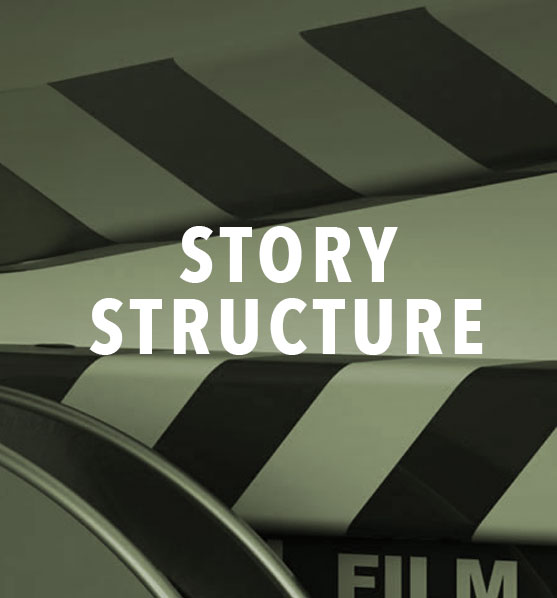QUICK SHEETS
Reference sheets from our round-table discussions
QUICK SHEETS
Reference sheets from our round-table discussions

Screenwriting logline tips.
The Hollywood Writers Group Quick Sheets are a free public resource to support screenwriters in their creative endeavors. We hope you find our loglines tips helpful, and wish you the best on your own unique journey.
Download a free copy of this quick sheet below.
“You either die a hero, or you live long enough to see yourself become the villain.”
Interested in updates to our quick sheets? Scroll to the bottom of this page.
New quick sheets are released every 2 weeks.
LOGLINES
Table of Contents
What is a Logline?
Screenwriting logline tips.
Here’s a clear breakdown of how loglines differ from taglines, synopses, and summaries—each has a distinct purpose, style, and audience within filmmaking and storytelling:
1. Logline
Definition:
A concise, typically one-sentence summary of a screenplay’s essential elements (protagonist, goal, conflict, stakes, hook).
Purpose:
- Quickly communicate the story’s core idea clearly and engagingly.
- Used primarily to pitch screenplays to producers, agents, or studio executives.
Length:
- Usually one sentence (ideally under 35–40 words).
Example:
“A troubled psychologist must help a frightened boy who sees dead people, only to discover that he himself is one of the spirits the boy can see.” (The Sixth Sense)
2. Tagline
Definition:
A short, catchy marketing phrase intended to create intrigue or sell a film to audiences.
Purpose:
- Promote and sell films directly to viewers.
- Usually found on posters, trailers, or promotional materials.
Length:
- Very short (often 3–8 words).
Example:
- Alien: “In space no one can hear you scream.”
- Jaws: “You’ll never go in the water again!”
3. Synopsis
Definition:
A brief narrative summary describing the film’s story clearly, concisely, and engagingly.
Purpose:
- Provide a clear overview of plot, character arcs, and major events.
- Used by producers, studios, festivals, or contests to understand the complete story.
Length:
- Typically around 1–2 pages (300–500 words).
Example (condensed synopsis):
“When Chief Brody discovers a man-eating shark terrorizing his beach community, he teams up with a scientist and a rugged fisherman to hunt it down, leading to an intense battle on open waters.” (Jaws)
4. Summary (Treatment)
Definition:
A detailed overview of your screenplay’s story from beginning to end, clearly describing all major plot points, character developments, and thematic elements.
Purpose:
- Clearly communicate the detailed structure and key plot points of a screenplay.
- Used internally or externally, for developing the story or pitching detailed ideas.
Length:
- Usually between 3–10 pages, often part of a longer “treatment.”
Example:
- A full-length breakdown of the plot from start to finish, covering all major events and character arcs clearly, without dialogue.
Quick Comparison Chart:
|
Type |
Length |
Purpose |
Audience |
Example |
|
Logline |
One sentence |
Pitching and capturing interest |
Producers, agents |
“A detective battles his fears to solve a series of murders.” |
|
Tagline |
Few words (3–8) |
Marketing, generating viewer intrigue |
General audience |
“Just when you thought it was safe…” |
|
Synopsis |
1–2 pages |
Brief narrative overview |
Producers, festivals, contests |
Short overview clearly summarizing story |
|
Summary |
3–10 pages |
Detailed story outline |
Studio execs, investors, partners |
Comprehensive, detailed story outline |
Final thoughts:
- Loglines sell the story concept concisely to producers.
- Taglines attract audience attention for marketing.
- Synopses briefly summarize the entire plot for decision-makers.
- Summaries (Treatments) detail the entire narrative clearly for deeper understanding or approval.
Elements of a Great Logline
Screenwriting logline tips.
An effective logline succinctly summarizes a script’s essential story elements in one compelling sentence. It’s a quick, powerful snapshot designed to capture the interest of readers, producers, or viewers immediately.
Here are the essential elements your logline should clearly convey:
1. Protagonist
- Who is the main character?
- Provide a concise description (occupation, personality trait, unique characteristic).
Example:
“An anxious kindergarten teacher,” “a disgraced detective,” “a rebellious teenage artist.”
2. Clear Objective or Goal
- What does the protagonist want or need to achieve?
- Identify a clear, tangible goal driving the story forward.
Example:
“must uncover a conspiracy,” “seeks revenge for a betrayal,” “fights to save their family.”
3. Conflict or Obstacle
- What stands in their way?
- Clearly define the antagonist, opposition, or main conflict.
Example:
“facing ruthless rivals,” “against an oppressive government,” “while battling their own fears.”
4. Stakes
- Why does achieving this goal matter?
- Establish clear consequences (emotional, physical, social, or existential).
Example:
“to prevent a war,” “to protect her daughter,” “to save humanity from extinction.”
5. Unique Hook or Concept
- What sets your story apart?
- Highlight originality, irony, or intriguing elements that capture immediate attention.
Example:
“a detective who’s secretly the killer,” “a love story set on a sinking spaceship,” “a heist inside a dream.”
6. Setting or Genre (optional but useful)
- Providing context (time period, setting, genre) helps readers quickly grasp tone and style.
Example:
“In a dystopian future,” “In 1950s Hollywood,” “In an isolated mountain town.”
Quick Logline Checklist:
Ensure your logline clearly answers:
- Who is your protagonist?
- What do they want or need?
- What’s standing in their way (conflict)?
- What’s at stake if they fail?
- What unique twist or hook makes this story compelling?
Example of a Strong Logline:
“When an obsessive-compulsive detective (protagonist) tries to solve his wife’s murder (objective), he must face his crippling anxiety and confront a powerful conspiracy (conflict) to prevent more deaths (stakes).”
Basic Structure Template
When [inciting incident happens], a [protagonist description] must [goal/action], before [stakes/conflict/ticking clock].
Example Loglines
- A timid Hobbit must travel across Middle Earth to destroy an ancient ring of power before it falls into the hands of a dark lord.
(The Lord of the Rings) - After a brilliant but arrogant surgeon loses the use of his hands, he must train in the mystic arts to stop a former pupil from destroying reality.
(Doctor Strange) - When a self-absorbed weatherman is trapped living the same day over and over, he must reexamine his life to break the cycle.
(Groundhog Day)
Marketing Your Screenplay
Screenwriting logline tips.
Loglines are crucial for selling and marketing your screenplay because they act as your first—and sometimes only—opportunity to capture interest, clearly communicate your story’s potential, and convince industry professionals your screenplay is worth exploring further.
Here’s exactly why loglines matter so much:
1. Immediate First Impression
- Loglines are your screenplay’s “elevator pitch.”
- They quickly demonstrate your ability to clearly summarize your story and convey a compelling narrative concept.
Industry Insight:
Producers and executives read hundreds of pitches. A strong logline can immediately stand out.
2. Quickly Communicate Core Story Idea
- Industry professionals have limited time. A compelling, concise logline efficiently communicates your screenplay’s central idea, protagonist, conflict, and stakes.
- Enables readers to grasp the essence of your story in seconds.
Example:
“A young farm boy discovers he has special powers and must join a rebellion to defeat an oppressive empire.” (Star Wars)
3. Clarifies Story Appeal (Marketability)
- Clearly conveys the marketability and audience appeal of your concept.
- A strong logline highlights why audiences will care, indicating commercial potential clearly.
Industry Insight:
Executives immediately assess potential audience engagement, genre clarity, and commercial viability from your logline.
4. Creates Curiosity and Intrigue
- A well-crafted logline hooks readers, leaving them intrigued and eager to read your screenplay.
- Provides just enough detail to create interest, without giving away everything.
Example:
“A man is trapped in the same day repeatedly and must learn true compassion to break the cycle.” (Groundhog Day)
5. Facilitates Easy Sharing & Pitching
- A succinct, engaging logline makes your story easy to communicate and share among industry professionals.
- Encourages executives, agents, and producers to share your idea internally, increasing your screenplay’s visibility and opportunity.
Tip:
If someone can clearly describe your screenplay to others easily, your chances of success greatly improve.
6. Demonstrates Professionalism
- A professional, carefully structured logline indicates you clearly understand industry expectations.
- Signals to decision-makers that you’re a thoughtful, skilled writer who knows how to market effectively.
7. Effective for Marketing and Promotion
- Loglines appear everywhere—pitch decks, script submissions, film festival applications, and query letters.
- They provide clarity, consistency, and effectiveness across all marketing materials.
8. Unlocks Opportunities
- A strong logline can lead directly to further conversations, requests for your full screenplay, meetings, and ultimately production deals.
- Industry professionals often initially select screenplays based solely on compelling loglines.
Final Thoughts (Why Loglines Matter):
- Immediate clarity and impact
- Demonstrate market potential clearly
- Capture industry attention quickly
- Facilitate easy, effective pitching
- Highlight your professionalism as a screenwriter
- Enable clear, consistent marketing efforts
- Open doors to deeper conversations and opportunities
Learn more about marketing your screenplay.
Check out our quick sheet on marketing your screenplay to learn more https://hollywoodwritersgroup.com/quick-sheets-marketing-screenwriting/
Pitching Your Screenplay
Screenwriting logline tips.
Here are clear, actionable tips for effectively presenting your loglines, both verbally and in writing, ensuring you deliver a compelling, engaging, and professional pitch for your screenplay:
Tips for Verbally Presenting Your Logline
1. Be Concise and Clear
- Clearly state your logline without hesitation or extra details.
- Aim for one sentence spoken confidently (approximately 15–20 seconds).
2. Emphasize Key Words
- Stress key elements: protagonist, goal, conflict, stakes.
- Highlight intriguing or unique parts with your tone and pacing.
3. Use Pauses Strategically
- Briefly pause after crucial points for emphasis.
- Allow listeners a moment to absorb the idea.
4. Convey Enthusiasm and Confidence
- Show your excitement—energy is contagious.
- Maintain steady eye contact and speak with assurance.
5. Speak at a Comfortable Pace
- Avoid rushing your words; clarity matters most.
- Use a natural conversational rhythm.
6. Practice and Memorize
- Know your logline intimately to deliver it confidently without reading from notes.
- Practice in front of a mirror or trusted colleagues.
7. Be Ready to Expand
- Prepare clear, concise follow-up sentences explaining key elements if prompted by questions.
Tips for Presenting Your Logline in Writing
1. Keep It Short and Punchy
- Aim for a single, concise sentence (ideally 35–40 words or fewer).
2. Clearly Highlight Essential Elements
- Clearly identify protagonist, goal, conflict, and stakes.
- Clearly state the hook or unique twist.
3. Choose Precise, Evocative Language
- Use vivid, specific words that clearly set your story apart.
- Ensure every word serves a clear purpose.
4. Avoid Overly Complicated Details
- Don’t overload the logline with secondary characters or complex subplots.
- Stay focused on the core narrative.
5. Double-Check for Clarity and Grammar
- Proofread carefully; clarity, grammar, and professionalism matter.
- Avoid vague phrasing or unnecessary complexity.
6. Tailor Loglines to Your Audience
- Slightly adjust wording to highlight genre or marketability depending on who you pitch (e.g., producers, agents, festivals).
7. Format Clearly
- In query letters or submissions, clearly separate your logline visually from surrounding text for readability.
Sample Logline Delivery (Verbal)
(Confident, energetic)
“When a skeptical journalist discovers evidence of extraterrestrial life, she must protect it from government agents determined to silence the truth at all costs.”
(Brief pause, wait for reaction.)
Sample Logline (Written)
“After uncovering a dangerous conspiracy, a disgraced FBI agent must race against time to stop a deadly attack, only to discover the mastermind is her former mentor.”
Quick Presentation Checklist
Verbal Checklist:
- Concise and clear
- Emphasize key elements
- Strategic pauses for impact
- Enthusiastic delivery
- Confident pacing
- Memorized and practiced
- Ready for questions
Written Checklist:
- Single concise sentence
- Precise, evocative language
- Essential elements clearly highlighted
- Avoid extraneous details
- Tailored for intended audience
- Grammatically correct and clearly formatted
Effectively delivering your logline, whether verbally or in writing, significantly increases your screenplay’s potential to attract interest, attention, and eventual success.
Examples of a Great Logline
Screenwriting logline tips.
A simple, effective template:
“[Protagonist] must [achieve a clear goal] despite [key obstacle/conflict], or else [stakes/consequences], only to [unique twist or hook].”
Examples of Compelling Loglines
Drama/Thriller Example:
“A determined detective must find a kidnapped child before sunrise while battling his own traumatic memories.”
Comedy Example:
“An awkward high school teacher must win a dance contest to save her job, even though she has zero rhythm.”
Sci-Fi Example:
“After crash-landing on a hostile planet, an estranged father and daughter must repair their broken relationship in order to survive.”
Here are great loglines for well-known films, each capturing the core character, goal, conflict, and stakes in a concise and compelling way:
The Matrix (1999)
A computer hacker discovers that reality is a simulation and joins a rebellion to free humanity from its machine overlords.
- Why it works: Clear protagonist, mind-bending hook, high stakes.
Jaws (1975)
When a killer shark terrorizes a beach town, a police chief, a marine biologist, and a grizzled fisherman must hunt it down before it strikes again.
- Why it works: Ticking clock, rising danger, unlikely trio of heroes.
Die Hard (1988)
An off-duty cop must outsmart a group of terrorists who have taken over a Los Angeles skyscraper — with his wife trapped inside.
- Why it works: Strong stakes, contained setting, clear action-driven goal.
Titanic (1997)
A poor artist and a wealthy young woman fall in love aboard the doomed R.M.S. Titanic — a romance threatened by class, expectations, and a sinking ship.
- Why it works: Emotional stakes, historical tragedy, forbidden love.
Back to the Future (1985)
A teenager is accidentally sent back to 1955 and must ensure his parents fall in love — or he’ll cease to exist.
- Why it works: Unique hook, personal stakes, time-travel twist.
The Godfather (1972)
The reluctant son of a powerful mafia boss is drawn deeper into the family’s criminal empire as he rises to power.
- Why it works: Character transformation, legacy vs morality, high-stakes underworld drama.
Quick Checklist for a Strong Logline
- Does it clearly introduce the protagonist?
- Is the protagonist’s goal clearly defined?
- Is the central conflict or obstacle compelling?
- Are the stakes obvious and meaningful?
- Does it feature a unique hook or intriguing twist?
- Is it concise (ideally under 35–40 words)?
- Does it make you curious to learn more?
A compelling logline is concise, clear, emotionally engaging, and leaves the reader wanting to know what happens next.







